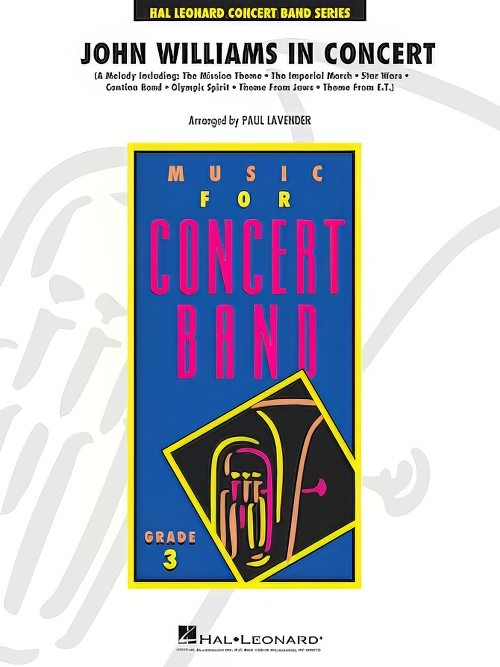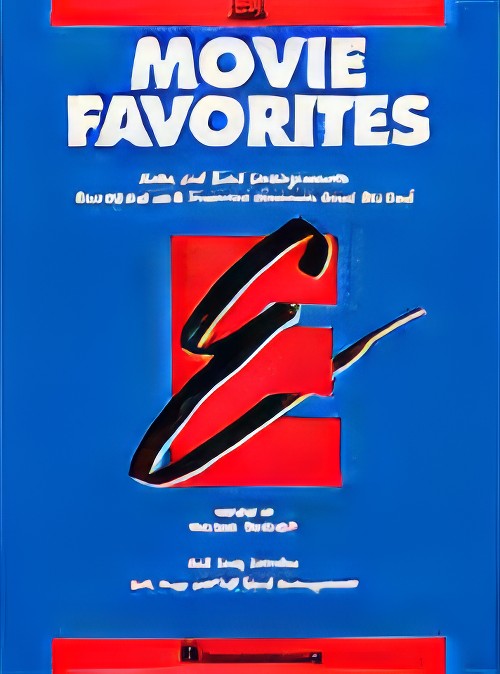Results
-
 £69.99
£69.99Four Easy Dances Wind Band Set (Score & Parts)
Four Easy Dances' is a four-part suite from Gobelin's 'Flexy Band Collection'. This series is meant for starter ensembles, i.e. youth orchestras which may not have the full range of instruments available yet. Therefore, it is possible to combine various instruments. 'Four Easy Dances' comes from the 'Flexy 3 Series' and can in principle be played by only three instruments, completed with three percussion instruments. 'Four Easy Dances' consists of: 1. Hop, Skip and Jump, 2. Little Polka, 3. Spanish Dance (castanets are obligatory) and finally 4. Tango. 04:15
Estimated dispatch 7-14 working days
-
 £54.99
£54.99House of Dance Wind Band Set (Score & Parts)
In imitation of the huge 'House rage' (at the end of the eighties) John Emerson Blackstone composed 'House of Dance' for youth orchestra. It proved to be a success. House owes its name to the place where this music was 'developed', i.e. an old night club called 'The Warehouse' in Chicago. Many subcultures followed. Whether you like the style or not, one thing is certain: House music (also called Dance music) for many provides the basis for hours of fun on the dance floor. 02:00
Estimated dispatch 7-14 working days
-
 £76.99
£76.99JOHN WILLIAMS IN CONCERT (Young Band) - Williams, John - Lavender, Paul
From movies to television to important national events, the thrilling music of John Williams continues to inspire audiences everywhere, Here are some of his musical contributions, spotlighted in an impressive medley. Included are: Theme From E.T., The Mission (NBC News), Star Wars, Imperial March, Cantina Band, Olympic Spirit, and Theme From Jaws.
Estimated dispatch 7-14 working days
-
 £8.50
£8.50MOVIE FAVORITES (Flute)
A collection of popular movie songs arranged to be played by either full band or by individual soloists with optional CD accompaniment. There is also an optional Piano Accompaniment part. Contents: Forrest Gump - Main Title; The John Dunbar Theme; Theme from 'Jurassic Park'; Raiders March; Chariots of Fire; Apollo 13; Somewhere Out There; Man from Snowy River; Star Trek - The Motion Picture; Theme from E.T.; Back to the Future
Estimated dispatch 7-14 working days
-
 £8.50
£8.50MOVIE FAVORITES B flat Bass Clarinet
A collection of popular movie songs arranged to be played by either full band or by individual soloists with optional CD accompaniment. There is also an optional Piano Accompaniment part. Contents: Forrest Gump - Main Title; The John Dunbar Theme; Theme from 'Jurassic Park'; Raiders March; Chariots of Fire; Apollo 13; Somewhere Out There; Man from Snowy River; Star Trek - The Motion Picture; Theme from E.T.; Back to the Future
Estimated dispatch 7-14 working days
-
 £8.50
£8.50MOVIE FAVORITES B flat Clarinet
A collection of popular movie songs arranged to be played by either full band or by individual soloists with optional CD accompaniment. There is also an optional Piano Accompaniment part. Contents: Forrest Gump - Main Title; The John Dunbar Theme; Theme from 'Jurassic Park'; Raiders March; Chariots of Fire; Apollo 13; Somewhere Out There; Man from Snowy River; Star Trek - The Motion Picture; Theme from E.T.; Back to the Future
Estimated dispatch 7-14 working days
-
 £8.50
£8.50MOVIE FAVORITES B flat Tenor Saxophone
A collection of popular movie songs arranged to be played by either full band or by individual soloists with optional CD accompaniment. There is also an optional Piano Accompaniment part. Contents: Forrest Gump - Main Title; The John Dunbar Theme; Theme from 'Jurassic Park'; Raiders March; Chariots of Fire; Apollo 13; Somewhere Out There; Man from Snowy River; Star Trek - The Motion Picture; Theme from E.T.; Back to the Future
Estimated dispatch 7-14 working days
-
 £8.50
£8.50MOVIE FAVORITES B flat Trumpet
A collection of popular movie songs arranged to be played by either full band or by individual soloists with optional CD accompaniment. There is also an optional Piano Accompaniment part. Contents: Forrest Gump - Main Title; The John Dunbar Theme; Theme from 'Jurassic Park'; Raiders March; Chariots of Fire; Apollo 13; Somewhere Out There; Man from Snowy River; Star Trek - The Motion Picture; Theme from E.T.; Back to the Future
Estimated dispatch 7-14 working days
-
 £8.50
£8.50MOVIE FAVORITES Baritone BC
A collection of popular movie songs arranged to be played by either full band or by individual soloists with optional CD accompaniment. There is also an optional Piano Accompaniment part. Contents: Forrest Gump - Main Title; The John Dunbar Theme; Theme from 'Jurassic Park'; Raiders March; Chariots of Fire; Apollo 13; Somewhere Out There; Man from Snowy River; Star Trek - The Motion Picture; Theme from E.T.; Back to the Future
Estimated dispatch 7-14 working days
-
 £8.50
£8.50MOVIE FAVORITES Baritone TC
A collection of popular movie songs arranged to be played by either full band or by individual soloists with optional CD accompaniment. There is also an optional Piano Accompaniment part. Contents: Forrest Gump - Main Title; The John Dunbar Theme; Theme from 'Jurassic Park'; Raiders March; Chariots of Fire; Apollo 13; Somewhere Out There; Man from Snowy River; Star Trek - The Motion Picture; Theme from E.T.; Back to the Future
Estimated dispatch 7-14 working days
